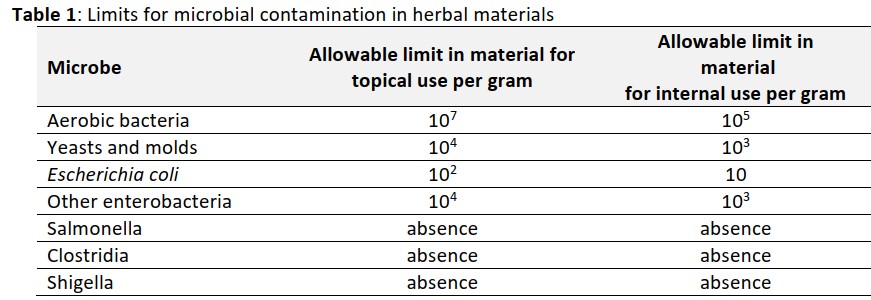Standardization of Medicinal Plants for the Sustainable Exploitation of Biodiversity
Keywords:
Medicinal plants, Standardization, Herbal monographs, Sustainable exploitation, BiodiversityAbstract
A supply of consistent raw plant material provides the basis on which manufacturing controls act to yield reproducible herbal medicinal products. Therefore, it is important to enact standards and specifications in herbal monographs that cover botanical, chemical, pharmacognostic, and physical properties to authenticate and standardize medicinal plants to assure consistency of the raw material. An important part of this effort is to develop analytical methods for the qualitative and quantitative assessment of raw plant materials using appropriate chromatographic methods. For example, a chromatographic assay, such as liquid or gas chromatography, could be included in a monograph to determine the constituent(s) with known therapeutic activity or an active marker or multiple analytical markers. The harmonization of standards in different regions and countries is intended to coordinate the quality assessment and facilitate access to international markets for these products. Standards defined by regional herbal monographs and quality requirements enacted by a harmonized multinational regulatory environment would be in the best interest for the sustainable development of herbal and traditional medicines.
Downloads
References
Gagnier JJ, Boon H, Rochon P, Moher D, Barnes J, Bombardier C. Recommendations for reporting randomized controlled trials of herbal interventions: explanation and elaboration. J Clin Epidemiol. 2006;59:1134–1149.
Mukherjee PK, Houghton PJ. Evaluation of herbal medicinal products, 1st Ed. Pharmaceutical Press; 2009.
WHO traditional medicine strategy 2014–2023. World Health Organization. Geneva; 2013.
Quality control methods for herbal materials. World Health Organization. Geneva; 1998.
Bouin AS, Wierer M. Quality standards of the European Pharmacopoeia. J Ethnopharmacol. 2014;158:454–457.
Guideline on specifications: test procedures and acceptance criteria for herbal substances, herbal preparations and herbal medicinal products/traditional herbal medicinal products. EMA/HMPC/162241/2005 Rev. 3. London; 2018.
Kunle OF, Egharevba HO, Ahmadu PO. Standardization of herbal medicines - A review. Int J Biodivers Conserv. 2012;4(3):101–112.
Bhairam M, Roy A, Bahadur S, Banafar A, Turkane D. Standardization of herbal medicines - An overview. J Appl Pharm Res. 2013;1:14–21.
Kumari R. A review on the standardization of herbal medicines. Inter J Pharm Sci Res. 2016; 7(2):97–106.
Li Y, Shen Y, Yao C-liang, Guo D-an. Quality assessment of herbal medicines based on chemical fingerprints combined with chemometrics approach: A review. J Pharm Biomed Anal. 2020. doi:10.1016/j.jpba.2020.113215
Steinhoff B. Review: Quality of herbal medicinal products: State of the art of purity assessment. Phytomedicine. 2019;60:153003.
Upton R, David B, Gafner S, Glasl S. Botanical ingredient identification and quality assessment: strengths and limitations of analytical techniques. Phytochem Rev. 2019. doi:10.1007/s11101-019-09625-z
Gupta MP. Herbal medicinal products. Pharmaceuticals Policy and Law. 2015;17: 231–249. doi:10.3233/PPL-140410
Asher GN, Corbett AH. Common herbal dietary supplement–drug interactions. Am Fam Physician. 2017; 9(2):101–107.
Choi JG, Eom SM, Kim J, et al. A comprehensive review of recent studies on herb-drug interaction: A focus on pharmacodynamic interaction. J Altern Complement. 2016; 22(4):262-279. doi:10.1089/acm.2015.0235.
World Health Organization. General guidelines for methodologies on research and evaluation of traditional medicine. WHO/EDM/TRM/2000.1. Geneva; 2000.
World Health Organization. WHO guidelines on good herbal processing practices for herbal medicines. WHO Technical Report Series, No. 1010. Geneva; 2018.
World Health Organization. WHO guidelines for selecting marker substances of herbal origin for quality control of herbal medicines. WHO Technical Report Series, No. 1003; 2017.
Bauer R, Franz G. Modern European monographs for quality control of Chinese herbs. Planta Med. 2010;76:2004–2011.
Parthick P et al. WHO guideline on quality control of herbal medicines. Int J Res Ayurveda & Pharmacy. 2011;2(4):1148–1154.
Vasisht K. Quality control of medicinal and aromatic plants and their extracted products by HPLC and high performance thin layer chromatography. In Handa SS, Khanuja SPS, Longo G, Rakesh DD (Eds.). Extraction technologies for medicinal and aromatic plants. United Nations Industrial Development Organization and the International Centre for Science and High Technology (ICS-UNIDO). Trieste; 2008.
Ginger. The United States Pharmacopeia and the National Formulary. USP-NF. 2020. https://online.uspnf.com/uspnf. Accessed March 10, 2020.

Downloads
Published
How to Cite
Issue
Section
License
Copyright and Disclaimer
Articles published in this journal are the copyright of Chulabhorn Royal Academy.
The opinions expressed in each article are those of the individual authors and do not necessarily reflect the views of Chulabhorn Royal Academy or any other faculty members of the Academy. The authors are fully responsible for all content in their respective articles. In the event of any errors or inaccuracies, the responsibility lies solely with the individual authors.


